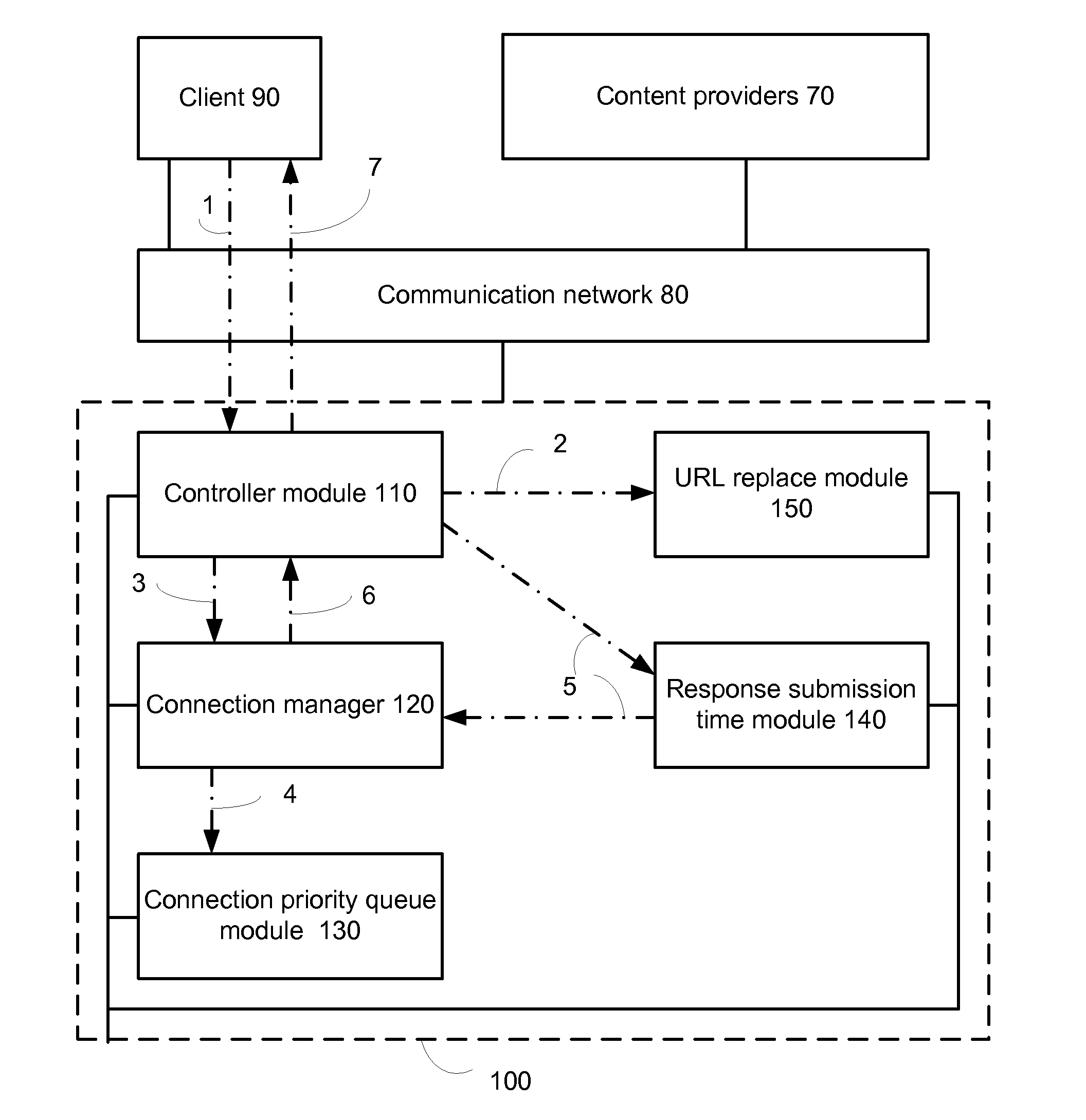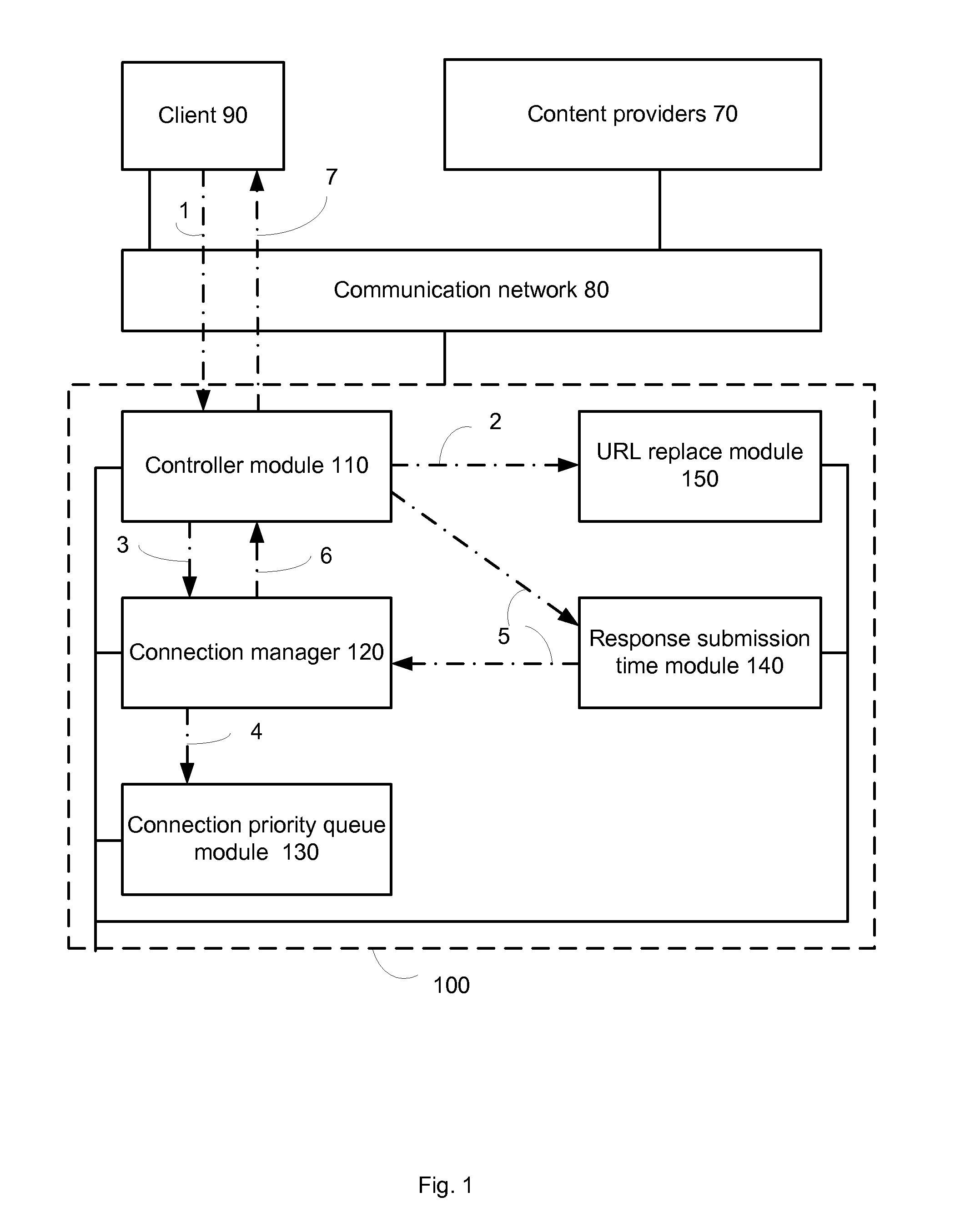Systems and methods for accelerating web page loading
a web page and page load technology, applied in the field of systems and methods for can solve the problems of not generating the business needed to survive, losing $1.1 to $1.3 billion in revenue each year, and many sites still have less than optimal page load times. to achieve the effect of accelerating web page load
- Summary
- Abstract
- Description
- Claims
- Application Information
AI Technical Summary
Benefits of technology
Problems solved by technology
Method used
Image
Examples
example 1
Use of Bundles for Enhancing End-User Experience
[0101]With HTTP, a user client (operating a Web browser) sends a request to the web server for each object used to build the Web page. The server typically answers with a response containing the object that was requested by the client. The time it takes for such a transaction to complete is the round trip time+transfer time.
[0102]The following example illustrates user client access to an HTML Web page that includes 6 objects. For the purpose of illustration, the following assumptions are made:[0103]i. the Web browser (of the user client) opens up to two parallel connections to the server;[0104]ii. each object involves an RTT time of 1 second and a transfer time of 1 second, the transfer time of a request is negligible;[0105]iii. the 6 objects of this Web page example are stored on domains different from the HTML page and thus require separate connections; and[0106]iv. the time it takes a client to parse HTML and find the objects refere...
example 2
[0156]Provided below are various use-cases of the Connection Manager of the present invention. Each use case illustrates a different advantage of using the present connection manager.
[0157]FIG. 1 illustrates a computing platform 100 according to an embodiment of the invention. The computing platform 100 can be a server but this is not necessarily so. The computing platform 100 may communicate with one or more clients over multiple connections and may be further arranged to communicate with a communication network that is coupled to content providers.
[0158]The computing platform 100 may include a controller module 110, a ConnectionManager module 120, a ConnectionsPriorityQueue module 130, a ResponseSubmissionTimeEstimator module 140 and a URL-replace module 150. The various modules of the computing platform 100 are coupled to each other.
[0159]FIG. 1 also illustrates a client 90 that is coupled to the computing platform 100 via communication network 120 and content p...
example 3
Automated Optimization Level Selection
[0212]This example illustrates a method for checking which content-intrusive optimizations can be applied for a given page with a given browser. Optimizations are associated to levels of risk determined according to the change to page content or to the ay a page is rendered.
[0213]The present system can be used to build an alternate set of page components for each optimization level by applying all the optimizations up to this level on the original set. Modified page components are injected into a browser and checked for changes in an end-result (rendering and content).
[0214]Comparisons to the original Web page is effected using bitmaps which are generated from a snapshot of the page render (snapshot of the entire page, not only visible area). The effect of object on a page is minimized by following these guidelines:[0215]i. Animated images—only an image that shows only first picture is used.[0216]ii. Flash—flash content is injected, but the brow...
PUM
 Login to View More
Login to View More Abstract
Description
Claims
Application Information
 Login to View More
Login to View More - R&D
- Intellectual Property
- Life Sciences
- Materials
- Tech Scout
- Unparalleled Data Quality
- Higher Quality Content
- 60% Fewer Hallucinations
Browse by: Latest US Patents, China's latest patents, Technical Efficacy Thesaurus, Application Domain, Technology Topic, Popular Technical Reports.
© 2025 PatSnap. All rights reserved.Legal|Privacy policy|Modern Slavery Act Transparency Statement|Sitemap|About US| Contact US: help@patsnap.com



